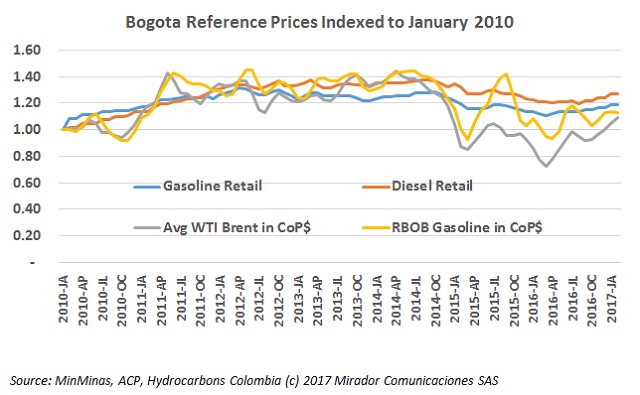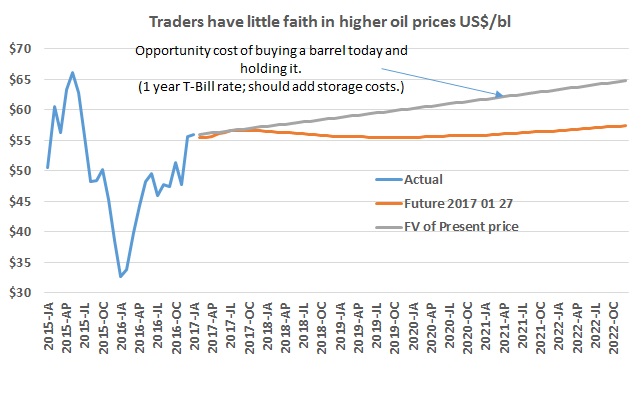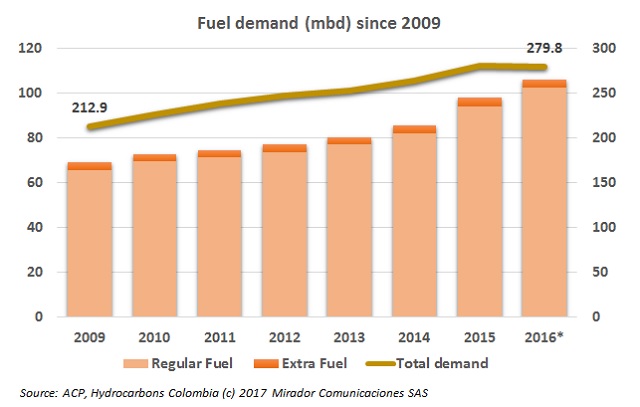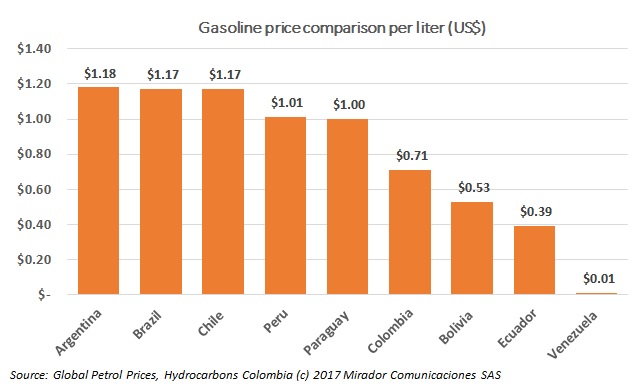
A report in La República shows the price per cubic meter (m³) that Colombians pay in each department. Servicio Públicos y Gas S.A., a small company located in Tolima, surpasses over three times some other companies in the same department.
Colombia is not an oil country but depends on it economically. The nation’s exports have fallen for four consecutive years because of the oil crisis. In recent months, this item reported growth, again thanks to oil.

Fuel prices started the year with an increase because of the tax reform that added a new tax. The determination of prices is an issue that provokes protests and blockades in the country.
The Colombian press revealed an investigation with the names of those who, during negotiations with Glencore, approved the entry of CB&I as Reficar’s construction engineering firm.

We use weekly closing oil prices in our database so, for our purposes, January ‘ended’ last Friday. Prices were essentially flat but the graph shows that traders are deeply suspicious about where they are going in the medium and long-term.

According to the National Statistics Department (DANE), fuel imports fell during the January-November period of last year. Total imports also decreased. Colombian total imports were US$40.8B in 2016.
Gilson Ribeiro, Manager of Chevron’s (NYSE: CVX) Fuels and Lubricants for Colombia and Central America said the Colombian fuel market has not seen big changes like the ones that are coming now that ExxonMobil (NYSE:XOM) is leaving the country after 50 or 60 years.

Although at the beginning of this year the National Government raised gasoline prices because of the new ‘Green Tax’, Colombia has one of the lowest prices in South America, according to data from Global Petrol Prices.
BioEnergy ended 2016 with good news: they had produced their first liter of ethanol in 10 years, after the construction of the Alcaraván plant in Puerto López, Meta. However, the General Comptroller announced that the plant is an unfeasible project.

The graph shows annual average prices for WTI and Brent in US$. Despite the ‘good feelings’ we have all had since November, the average price for 2016 was below that of 2015.